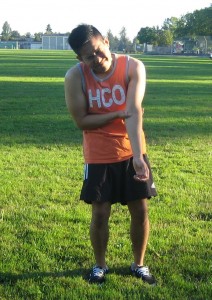There are different disorders that can affect the elbow. Most of these disorders are typically caused by overuse and sports injuries. Sports such as baseball, golf, boxing and tennis can cause elbow disorders. These disorders usually involve the elbow ligaments, arm muscles, tendons and even the bones in the arm. The treatment depends on the symptoms as well as the affected structures.

Types of elbow disorders
- Dislocation or fracture of the elbow – these are usually caused by an injury to the elbow such as an over stretched arm or from a fall. A dislocation happens if the bone is moved out of its usual position while a fracture occurs if there is a crack or break in the bone. The symptoms include pain, swelling, discoloration, visual changes to the elbow and inability to move the affected joint.
- Ligament strains and sprains – these occur in case any of the ligaments in the elbow joint is under trauma or repeated stress. The symptoms include joint instability, pain, problems with range of motion and swelling.
- Medial epicondylitis (golfer’s elbow) – it affects the interior tendon in the elbow and caused by repetitive throwing motion common in baseball or the downward swing in golf. This disorder can result to pain along the interior of the elbow especially during the movement of the wrist.
- Olecranon bursitis (student’s elbow, draftman’s elbow, miner’s elbow) – the bursae which provides protection and lubrication to the joints are affected by this condition. It can be due to a blow to the elbow, infection, leaning on the elbow for extended periods or an underlying medical condition. The symptoms include pain, swelling and difficulty moving the elbow.
- Osteoarthritis – this condition affects the cartilage and can be caused by an elbow injury or wear and tear of the joints. The symptoms include pain, locking sensation in the elbow, difficulty bending the elbow, swelling and grating sound with movement.
- Osteochondritis dissecans (Panner’s disease) – occurs once small pieces of cartilage and bone become embedded in the elbow joint. The symptoms include tenderness on the exterior of the elbow, pain, difficulty extending the arm and locking feeling in the joint.
- Lateral epicondylitis (tennis elbow) – usually affects the tendon on the exterior of the elbow and caused by playing racquet sports. The symptoms include pain or burning sensation along the exterior of the elbow and difficulty gripping.
How elbow disorders are diagnosed?
There are different ways in which elbow disorders are diagnosed. The methods include:
- X-ray
- Physical examination
- Computerized tomography scan
- Electromyography (EMG)
- Magnetic resonance imaging
- Biopsy of bursa fluid
Treating elbow disorders
The treatment for different elbow disorders varies depending on the problem and the symptoms that are manifesting. Majority of elbow disorders would require conservative treatment. Surgery is considered as the last resort if the symptoms will not improve. The available treatment options include:
- Application of ice on the affected part
- Rest is a primary first aid step
- Physical therapy
- Intake of non-steroidal anti-inflammatory drugs (NSAIDs)
- Steroid injections
- Immobilization or braces
- Elbow padding
- Surgical treatments
Preventing elbow disorders
Since most of the disorders are due to injury or overuse, they can be prevented by:
- Observing proper grip when using sports equipment
- Correcting sports techniques that are performed improperly
- Using proper tension on racquets
- Using elbow padding
- Proper warm up and stretching
- Performing exercises that strengthen the muscles around the elbow joint
- Breaks during repetitive tasks
